81 F. high in the Twin Cities Friday.
81 F. average high for June 22.
70 F. high last year on June 22, 2011.
+3.7 F. June temperatures are running nearly 4 degrees warmer than average, to date.
$50 million in damage to Duluth's infrastructure, according to Mayor Ness. Total damage toll may far exceed $100 million.
10% of Duluth's roads and utility infrastructure damaged by Wednesday's historic flooding. 100+ roads still closed.
Photo credit above: "
Lake Superior was filled with mud from flood runoff looking east from Duluth toward Wisconsin, Thursday, June 21, 2012." (Glen Stubbe/Minneapolis Star Tribune/MCT)
8.83" rain soaked Cannon Falls on June 14, a new state rainfall record.
15.11"
rain so far this month at Cannon Falls, "only the 4th time in
Minnesota's climate history that an observer has reported 15 or more
inches for June." Source:
WeatherTalk blog.
7.41" rain fell on Island Lake (St. Louis County) on
June 20, the second state rainfall record so far in June. Source: Dr.
Mark Seeley.
Photo credit above: "
Residents of Cannon Falls, MInn.
survey the damage to Minnieska Park and a swollen Cannon River in
Cannon, Minn. Friday morning June 15, 2012 following over night rains
that dumped over 8 inches of rain on the area causing many area rivers
to overflow their banks." (AP Photo/The Rochester Post-Bulletin, Jerry Olson)
Weekend Meteogram. The ECMWF suggests the best
chance of a few showers and T-showers will come this morning, a smaller
risk of thunder this afternoon. A dry sky returns tonight, Sunday still
the sunnier, warmer day of the weekend as winds shift to the northeast
at 10-20 mph.
Another Round of 90s. The ECMWF (which is on a roll)
is pulling more 90-degree heat into Minnesota by the middle of next
week, maybe mid to upper 90s by next Thursday. Something to look forward
to.
450 cooling centers opened up in the New York City
area to deal with the impact of extreme heat. Details below from Climate
Central.
102 F. high in Denver, Colorado, a record high for June 22.
Photo credit above: "
Youths cool down with an opened fire
hydrant in New York, June 21, 2012. Record-high temperatures marked the
second day of summer in the city." (Angel Franco/The New York Times)
Brownsville: the ECMWF (European) model brings
"Debby" ashore near Brownsville, Texas next Wednesday. Other models
suggest a track toward the Florida Panhandle. The reality: steering
winds over the Gulf of Mexico are light - it's still too early to know.
Confidence level is low; that track will almost certainly change in
the coming days. Details below.
Minnesota Flood: "We Feel Overwhelmed". It will take many months for any semblance of normalcy to return to the North Woods of Minnesota.
The Morris Daily Herald has more details: "
As
residents here filled dumpsters with ruined possessions Thursday and
state officials surveyed gaping sinkholes and an estimated $100
million in damage from historic flooding, water suddenly rose farther
south, forcing more evacuations. In Moose Lake, about 40 miles south of
Duluth, city officials declared a state of emergency as water
encroached and surrounded the town. Well into the evening, residents
desperately sandbagged trying to hold back rising water. Some won. Some
didn’t."
Photo credit above: "
The small town of Brookston,
northwest of Cloquet, Minnesota was feeling the heat of the rising St.
Louis River Thursday morning, June 21, 2012." (Photo by Brian Peterson/Minneapolis Star Tribune/MCT)
Worst Ever Duluth, Minnesota Flood Causes $80 Million In Damage. More head-shaking details from
Reuters; here's an excerpt: "
Duluth
officials on Thursday estimated damage at up to $80 million just to
the city's public infrastructure from the flood that swamped the
northeast Minnesota city and nearby communities this week. The
flooding, which left huge sinkholes and ripped up dozens of roads,
also forced hundreds of people from their homes and killed several zoo
animals. Mayor Don Ness said the flood
was the worst in the history of the Lake Superior port city, surpassing
a 1972 flood both in damage and rainfall, and he estimated the damage
to public infrastructure at $50 to $80 million dollars."
Flash Flooding Wreaks Havoc In Duluth, Minnesota. More details from
Climate Central: "
After
18 hours of rain, the most rain the city of Duluth, Minn., has seen
at once in nearly 150 years, flash floods wreaked havoc on the city on
Wednesday. The floods followed 10 inches of rain and were more severe
than any floods that have occurred there in the past 100 years, according to the Minneapolis Star Tribune.
Creeks became raging rivers and the rushing waters ripped apart city
streets and created sinkholes. Two hundred and fifty people were
evacuated from the Fond du Lac neighborhood, which is the lowest of the
neighborhoods in Duluth. The mayor of Duluth, Don Ness, told the Associated Press
that “Fortunately . . . it’s a relatively small number of households
that are being evacuated . . . most homes in Duluth are farther up the
hill.”
Photo credit above: "
A submerged mail box is the only sign
of the driveway for this flooded home on Lakeshore Drive in Moose
Lake, Minn., Thursday, June 21, 2012. The waters of the Moose Horn
river overflowed in to parts of Moose Lake after record rainfall hit
the area." (AP Photo/The Duluth News-Tribune, Clint Austin)
Duluth Flood: A Historical Perspective. Dr. Mark
Seeley takes a look at previous floods across northern Minnesota, trying
to put 10"+ amounts into some sort of long-term historical
perspective. Here's an excerpt of his latest post at
WeatherTalk: "
The
climate record from Duluth shows very few stormy periods that are
analogous to what happened there this week. Arguments can be made that
thunderstorms on September 5-6, 1876 (6.48 inches); July 20-22, 1909
(7.83 inches), and August 15-21 (7.91 inches) might be comparable, but
of course the Duluth neighborhoods and landscape in general were
vastly different in those times. It is expected that damage to
infrastructure in Duluth will be considerable this time around,
perhaps approaching or exceeding $100 million, compounded by a
prolonged recovery and reconstruction period."
Photo credit above: "
RVs in the Moose Lake, Minn., city
park and RV campground are stranded in water overflow from the nearby
Moosehead Lake on Thursday, June 21, 2012. Damage assessment teams
from the Federal Emergency Management Agency are expected to be in the
area next week to start tallying the damage to public infrastructure in
14 counties and one Indian reservation." (AP Photo/The Duluth News-Tribune, Bob King)
Was Climate Change A Factor? The question keeps
coming up - people want to know if a warmer atmosphere somehow
contributed to the mega-flood that may ultimately cost Minnesota well
over $100 million. My answer, after teeing this up with climate
scientists I trust, is yes. People who say "you can't link any one event
with climate change" are missing the point. Climate and weather are
now hopelessly intertwined, linked - flip sides of the same coin. It's
basic physics: a warmer atmosphere holds more water vapor. If there's
more water floating overhead you increase the potential for these
extreme rainfall events. You may argue over how much is "natural" vs.
man-made, but there's no debating the fact that Minnesota is a warmer
place than it was 30-40 years ago.
A warmer atmosphere is now flavoring all weather events,
making winter snows more sporadic, reducing the number of subzero lows,
keeping ice on area lakes for fewer days, and increasing summer dew
points and humidity levels, doubling the number of 3"+ downpours since
1961, according to a new study that came out in May. This warmer
"background hum" is our new reality. It will continue to manifest
itself in strange, and (at times) violent ways in the years to come.
The truth: the rain isn't falling as gently as it did for our
grandparents. This trend will ultimately impact everything from how we
build our roads and homes to agriculture; engineering new strains of
crops that are more resistant to downpours and (increasing) bouts of
drought. The weather models we use are having a tough time keeping up
with this brave new Weather 2.0 environment - the maps are crazy: just
two months ago most of Minnesota was in an extreme drought - now we're
faced with one of the wettest Junes in Minnesota state history. Just
when you think you've seen it all...
Photo credit above: "
The Lester River flows through a gash
it created in Jean Duluth Road north of Duluth, Minn., Thursday
morning, June 21, 2012. City, county and state officials spent Thursday
assessing damage, while areas farther south continued to fight rising
floodwaters. The town of Moose Lake was being described as "an island." (AP Photo/The News-Tribune, Bob King)
Victor - I see your point. There's no question Duluth just saw a
historically significant rainfall. I referred to it as a 1-in-100 year
flood. I'm not sure we have enough data to say it's "unprecedented", but
I agree that 10" rain for the North Woods is incredibly unusual,
off-the-scale weird. As I wrote (above) climate change was a undoubtedly
a factor in turbocharging rainfall amounts, so this may very well have
been the most rain to ever fall on the Duluth area from one storm.
Accurate data goes back to the mid-1800s, before that we really don't
have a clue about specific extreme rainfall events. The more I look at
the storm aftermath -
the more I'm willing to adjust my point of view and admit that, yes, last week's flooding probably was unprecedented.
Major Flooding In Aitkin. The Mississippi River at
Aitkin is forecast to crest next Tuesday about 1.5 feet above major
flood stage, still 3 feet below the all-time record.
Record Flooding In Brainerd. The Mississippi River is forecast to approach the all-time record in Brainerd later today. Source:
NOAA.
What Drought? It's amazing how far we've come since
late March, when 96% of Minnesota was in a moderate drought, 24% of the
state in severe drought. Now only a small portion of the Red River
Valley is in a moderate drought. The latest U.S. Drought Monitor is
here.
80% Probability of "Debby".
NHC has raised the odds to 80% of tropical cyclone (at least tropical storm strength) within 48 hours. Details:
SATELLITE IMAGERY AND SURFACE OBSERVATIONS INDICATE THAT THE
CIRCULATION ASSOCIATED WITH THE LARGE SURFACE LOW PRESSURE AREA
LOCATED ABOUT 100 MILES NORTH OF THE NORTHEASTERN TIP OF THE
YUCATAN PENINSULA HAS CONTINUED TO BECOME BETTER DEFINED. SURFACE
PRESSURES ARE STILL FALLING ACROSS THE AREA...AND SHOWER AND
THUNDERSTORM ACTIVITY HAS BEEN STEADILY INCREASING OVER MUCH OF THE
CENTRAL AND EASTERN GULF OF MEXICO TODAY. ENVIRONMENTAL CONDITIONS
ARE EXPECTED TO REMAIN CONDUCIVE FOR A TROPICAL DEPRESSION TO FORM
DURING THE NEXT DAY OR SO AS THIS LARGE DISTURBANCE DRIFTS SLOWLY
NORTHWARD. THIS SYSTEM HAS A HIGH CHANCE...80 PERCENT...OF BECOMING
A TROPICAL CYCLONE DURING THE NEXT 48 HOURS. INTERESTS ALONG THE
UNITED STATES GULF COAST SHOULD MONITOR THE PROGRESS OF THIS
DISTURBANCE THROUGH THE WEEKEND. HEAVY RAINS AND LOCALIZED FLOODING
ARE POSSIBLE ACROSS THE YUCATAN PENINSULA...WESTERN CUBA...AND
SOUTHERN FLORIDA THROUGH SATURDAY.
Flip A Coin. Here are the various computer model
predictions about the track of (imminent) "Debby". A majority of models
are now taking the storm west, toward Texas - which is falling in line
with the European (ECMWF) model solution below. Graphic source
here.
More Speculation Than Prediction. The ECMWF model
forecast above (valid next Wednesday) shows "Debby" coming ashore over
south Texas. Confidence level is very low, but in the spirit of full
disclosure, here you go. Model data courtesy of
Weather Underground.
Florida Soaking. The tropical disturbance
strengthening in the Gulf of Mexico is forecast to dump 2-5" of rain on
Florida through the weekend, some 18"+ amounts predicted for the eastern
Gulf of Mexico. Heavy rain lingers today over New England, some 1"+
amounts possible near Sioux City and the Pacific Northwest. Map:
NOAA HPC.
Possible Tropical System In Southern Gulf Has Forecasters On Alert. More details from New Orlean's
nola.com: "
Forecasters at the Slidell office of the National Weather Service are watching the system's evolution carefully. In their morning forecast discussion message,
they said computer forecast models show the low a few hundred miles
south of the Louisiana coastline by Saturday evening. "If this is the
case, higher winds and higher seas will be expected, and at least a
small craft advisory will be needed," the message said. "That also
depends if the system has not developed into a named system by then."
Summer Comes In With A Bang Setting Heat Records.
Here is a partial list of record-setting heat records in the Northeast,
along with some resources to try to put this into perspective, courtesy
of
Climate Central: "...
Climate
studies show that, likely in part because of global warming, there
are now many more record highs being set in the U.S. each year
compared to record lows. In 2011, the ratio was about three warm
temperature records to every cold temperature record. To track record
temperatures in your region, take a look at our Record Temperature Tracker. You can also see how much your state has warmed over the past 100 years by looking at our “Heat Is On” Interactive map."
Photo credit above: Climate Central and flickr/
afagen
40 Years Lager, Agnes' Wrath Touches Off Flood Of Memories.
It was only a tropical storm, but "Agnes" stalled over Pennsylvania,
doing a big loop over the state, prolonging tropical rains. The storm
flooded out our basement ( still have vivid memories of swimming in 5
feet of cold, muddy water, in my underwear [TMI] sorry) - and ultimately
"Agnes" got me interested in a career meteorology. Here is a recap of
the storm that triggered Pennsylvania's worst floods on record from
Lancaster Online: "
Forty
years ago the "A" storm of the hurricane season arrived here on June
22. It was a relatively weak one when it first made landfall in
Florida. But as Hurricane Agnes started to make its way up the east
coast and converged with another low pressure system over Pennsylvania,
it reached its full intensity and became the costliest natural
disaster in the United States at that time. The damage and death toll
was the highest in Pennsylvania, with about 50 deaths and $2.3 billion
in losses. "We haven't had an event that can match Agnes," Eric Horst,
director of the Weather Information Center at Millersville University,
said."
Photo credit above:
"Agnes floodwaters collapsed the Engleside Bridge, south of the city, into the raging Conestoga River." (Lancaster Newspapers)
"Ask Paul". Weather-related Q&A:
Subject: Maybe it is rocket science
Paul,
"
Read your column today and I feel for you. For the last few
months I have been working my way through a DVD course on meteorology
(taught by Prof. Robert Fovell, if that means anything to you). I have
gotten through 16 lectures and still haven't got to storms. Nonetheless,
I no longer wonder why you guys don't always get it right. Instead, I
wonder why you even try."
Steve Thompson.
Steve- thanks for the chuckle. You're right - some days I wonder why I
set myself up for problems and recriminations. Trying to time summer
T-storms is problematic. We know when the atmosphere is ripe for
convective showers, but trying to predict exactly when and where a
5-mile-wide, 30-45 minute T-storm will pop in this tropical stew? Good
luck. Instability storms are most likely to sprout around the dinner
hour, between 4-7 pm, right after the high temperature for the day, when
the air floating overhead is most unstable and irritable. But warm
frontal storms often flare up late at night, blossoming after dark along
vague, shifting boundaries. That's what happened in Duluth last Tuesday
and Wednesday; storms repeatedly formed along a temporarily stalled
warm frontal boundary. One storm would fizzle, another would take it's
place, a veritable conga-line of storms.
If it was just a matter of moving a storm or front from Point A to
Point B the process would be straightforward and somewhat trivial.
That's what many people assume. "Paul, it's raining in North Dakota
today, it'll reach Minnesota tomorrow!" Duh. It's not that easy. Storms
pop (literally) out of thin air; they mutate as they move along. Trying
to predict which storm cells will grow and intensify, and which storms
will fizzle and die, is a science within a science.
Most days we're like frazzled weather-doctors, looking at symptoms,
trying our best to come up with a real-time meteorological diagnosis on
the fly. Out of 100 storms on Doppler maybe 3-5 will mutate and become
severe. These storms often give off tell-tale signs (sudden spike in
lightning strikes, large hail, "right turners"). These are the storms
that may cause damage and injury, so we focus on these. But most people
just want to know "what time will it rain at MY HOUSE?? The analogy is
looking at a traffic map on Google and trying to time precisely what
time you'll walk in the door at home. You can get close, but there are
thousands of variables, timing traffic lights, new traffic entering the
pattern, etc - that ultimately impact your commute time. A few new NOAA
weather models show promise (my favorite is the HRRR model, which goes
out 12 hours). Most summer days we can give a 3-6 hour lead time, but if
storms mushroom suddenly along a dormant frontal boundary we're often
caught with our Dopplers down. That's what happened last Sunday
(Father's Day). Long explanation - sorry. Thanks for the note, and for
recognizing how difficult the forecast process is, especially during the
summer months.
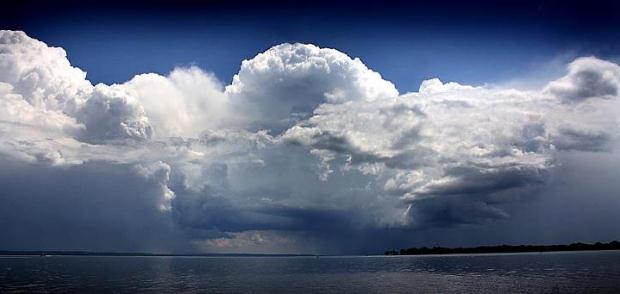
Photo Of The Day. Here is an awesome display of cumulonimbus, courtesy of Brad Birkholz. Details: "
A look at a cumulonimbus thunder shower that passed over Neenah, WI. Friday afternoon as seen from Kimberly Point Park."
"Shaka" Turns Your iPhone Into A Wind-Speed-Measuring Machine. Yes, every weather geek (um...enthusiast) should have at least one. More from
gizmag.com: "
If
you’re into activities such as windsurfing, sailing or kite-flying,
then you’re going to want to know where and how hard the wind is
blowing. While weather reports may give average wind speeds for your
city as a whole, they’re usually not very specific. That’s where Shaka
comes in. It’s a tiny wind meter that works with your iPhone. Shaka
plugs into the phone’s headphone jack. Once it’s held into the wind and
its blades start spinning, a paired app displays data such as wind
speed, direction and temperature, in real time."
Twisted Logic. Thanks to failblog.org for passing this nugget along.
A Perfect Friday. Yesterday was about as good as it
gets in late June in Minnesota, dew points in the (comfortable) 50s,
lukewarm with a gentle breeze. Highs ranged from 64 at Grand Marais to
77 Duluth, 80 St. Cloud and 81 in the Twin Cities and Redwood Falls.
Paul's Conservation Minnesota Outlook for the Twin Cities and all of Minnesota:
TODAY: Patchy clouds, passing T-shower. Dew point: 59. Winds: South 10-20. High: near 80
SATURDAY NIGHT: Isolated evening shower, drying out late. Low: 68
SUNDAY: Sunny & pleasant - stiff breeze. Dew point: 62. Winds: NE 10-20. High: 83
MONDAY: Blue sky, cooler and less humid. Dew point: 52. Low: 58. high: 79
TUESDAY: Partly sunny, still quiet. Turning warmer. Dew point: 55. Low: 63. High: 85
WEDNESDAY: Hot sun, sticky again. Dew point: 64. Low: 68. High: near 91
THURSDAY: Sizzling summer fun! Plenty hot with hazy sun. Dew point: 68. Low: 71. High: 95
FRIDAY: More clouds, still steamy and very warm. Low: 72. High: 90
"Warm Wishes"
My first winter in Minnesota, standing in
KARE-11's backyard, we picked up 98.6" of snow. I remember thinking
"what have I gotten myself into?" I said a quiet prayer. "Please God,
warm things up a little." I got my wish - far more than I bargained for,
in retrospect.
Did a warmer atmosphere turbocharge the 10" rains in Duluth?
Yes.
A warmer atmosphere holds more water vapor,
flavoring ALL weather floating above our heads now. Climate and weather
are inseparable, flip sides of the same coin. This warm
"background-hum", this lukewarm atmospheric-muzak, is making winters
more fickle, increasing summer dew points, ultimately stacking the deck
in favor of more extreme rainfall events.
We can debate how much of the warming is natural
vs. man-made, but there's no arguing the fact that it's getting warmer
out there.
Dr. Mark Seeley reports "The climate record from
Duluth shows very few stormy periods that are analogous to what
happened there this week." Duluth picked up a hurricane's worth of rain
earlier this week. There is nothing else in the historical record that
even comes close. What was impressive from a meteorological perspective
wasn't just the 10.1" in downtown Duluth, but the size of the area that
picked up 5-8" of rain, stretching from near Brainerd to the North
Shore, hundreds of thousands of square miles picked up 2-3 month's worth
of rain in less than 24 hours. Amazing.
A stray T-shower is possible this morning; sunny
80s on tap for Sunday fun. 90s return the middle of next week. Yes,
it's going to be stinking hot again by next Wednesday and Thursday.
It could be worse. "Debby" will probably become
a tropical storm this weekend, soaking Florida - possibly pushing into
south Texas as a hurricane by the middle of next week.
Climate Stories...
Global Carbon Emissions Rise Is Far Bigger Than Previous Estimates. The story from
The Guardian; here's an excerpt: "Carbon dioxide emissions have risen by even more than previously thought, according to
new data analysed by the Guardian,
casting doubt on whether the world can avoid dangerous climate change.
The data has emerged as governments met in Rio de Janeiro to finalise
the outcome of the
Rio+20 conference, aimed at ensuring that economic growth does not come at the expense of irreparable environmental degradation, but which
activists say has not achieved enough to stave off severe environmental problems. Global
carbon emissions from
energy are up 48% on 1992, when the original Earth summit took place in Rio – a
historic summit at which governments agreed to limit emissions in order to prevent dangerous climate change."
Photo credit above: "
A hazy day in Wuhan, China, the country that has experienced a 240% increase in carbon emissions between 1992 and 2010." Photograph: Darley Shen/Reuters.
"This Is Climate Change" Photo Series Show Dramatic Effects Of Global Warming (Photos). Here's an amazing photo slide show highlighting the impacts of a warming world, courtesy of
Huffington Post: "
Climate
change is one of the hottest issues of our time, and nothing helps
tell the story like photos. The Del Mar Global Trust, a private
charitable foundation with a focus on environmental issues, has started
a website called "This Is Climate Change" as part of an awareness-raising initiative. Its focal point is a series of powerful then-and-now photos that documents arctic and antarctic ice melting, mountain pine beetle infestation, and glacial retreat."
Photo credit: USGS.
The Most Anti-Environment Congress In History: Here's The Record. From
The Huffington Post; here's an excerpt: "
Global
temperatures are rising, violent weather is increasing; chemicals in
the air, food supply and water might be leading to soaring rates of
allergies, asthma, certain cancers, hormone disruption, male
infertility. Forest lands are vanishing at unprecedented rates, vast
dead zones are spreading in the world's oceans, we are running out of
non-renewable fossil fuels. Everyone knows that we are facing an
unprecedented environmental crisis -- right? Wrong. This news seems
never to have gotten through to America's Republican legislators. In
the face of these huge and escalating threats, the GOP majority over
the last year has voted no fewer than 247 times (nearly once a day for
every day the House was in session) to weaken environmental
protections that have been in place for decades and to defeat needed
legislation."
The joys and perils of air conditioning....
We've Forgotten Natural Cooling. Air conditioning is
a). expensive, and b). an energy sink that ultimately pumps more
greenhouse gases into the atmosphere. Here's an excerpt of an
interesting Op-Ed at
The New York Times: "
Air-conditioning
is a 20th century idea. Our early ancestors avoided the heat by
retreating into the cave or the shade of a tree, and engaging in
strenuous activity only during the cooler or breezier part of the day.
Early vernacular buildings developed using these universal principals,
carefully orienting and shading buildings so that they gained heat in
winter and were shady in summer, introducing thermal mass in dry
climates, and in more humid ones using cross ventilation, porches,
shutters, ceiling fans, solar chimneys and insulation."
Crucial To Modern Life. Another perspective in this Op-Ed at
The New York Times; here's an excerpt: "
Air-conditioning
is a necessary luxury. For thousands of years before the invention
of air-conditioning in 1902, humans survived high heat and humidity by
constructing protective shelters and limiting their activity during
the hottest times of the year. Air-conditioning puts us in control of
our comfort and frees us from the discomfort, risk and uncertainty of
the weather. The availability of air-conditioning allows architects to
consider building geometries that were not possible when it was
critical that everyone be seated near a window. This allows larger
floor plates that encourage collaboration and permit the high densities
of our modern cities."
Study: Southern California Could See Record Scorchers. The article from Silicon Valley's
mercurynews.com; here's an excerpt: "
The
study was commissioned by the city and conducted by UCLA's Department
of Atmospheric and Oceanic Sciences. It downscaled global climate
change computer models to the local region, breaking down predictions
to 1.2-mile segments, and is 2,500 times more precise than previous
climate models for the region, researchers said. They said dense urban
areas such as downtown Los Angeles probably will warm an average of 4
degrees, with a warming range of up to 6 degrees in the Mojave Desert.
The number of days where the temperature tops 95 degrees
could triple in downtown Los Angeles and jump five-fold in the
deserts, according to the study, while the hottest days could be
record-breakers."
Climate Change Clues Found In Remote Siberian Lake. Here's an excerpt of an interesting story at
Kansas City Infozine: "
Intense
warm climate intervals--warmer than scientists thought possible--have
occurred in the Arctic over the past 2.8 million years. That result
comes from the first analyses of the longest sediment cores ever
retrieved on land. They were obtained from beneath remote, ice-covered
Lake El'gygytgyn (pronounced El'gee-git-gin) ("Lake E") in the
northeastern Russian Arctic. The journal Science published the findings
this week. They show that the extreme warm periods in the Arctic
correspond closely with times when parts of Antarctica were also
ice-free and warm, suggesting a strong connection between Northern and
Southern Hemisphere climate."
Image above: NASA.
Tackling Global Warming In 21 Easy Steps. Ezra Klein
takes a look at what the global community can do (collectively) to
prevent a 2 C warming in the coming years; here's an excerpt from his
story at
The Washington Post: "...
What
are these policies? To some extent, they’re things that people are
already doing. Many of the 1,000 largest greenhouse gas emitters in the
world have already pledged to reduce their emissions through
money-saving efficiency measures. If an organization like the World
Business Council could somehow lead just 30 percent of these companies
to cut their energy emissions 10 percent by 2020, that would add a
significant chunk of the needed cuts. Another chunk of cuts could come
from companies like Wal-Mart that have pledged to “clean up” their
supply chains. Likewise, the world could get more emissions chunks if
all of the hundreds of cities that have pledged to cut emissions around the world actually followed through on their promises."
Graph credit above: Blok et al. "
Bridging the greenhouse-gas emissions gap" Washington Post.
Commentary: Climate Change Isn't Fictional. Here's an excerpt of an Op-Ed from Appleton's
Post Crescent: "
Is
it just me, or has it been a little warm around here lately? Or
warmer earlier? The early and unusually mild spring here in Wisconsin
may be nature’s way of reminding us that the clock is ticking on
climate change and we need to take action before it’s too late.While
stationed in Kangerlussuac, Greenland, 50 years ago, I noted my airbase
was 4 miles west of the Russell Glacier grinding down from the ice
cap. Looking at today’s satellite images, this glacier has retreated
to the east toward the ice cap, easily noted from the satellite. The
retreat averages 1,000 feet per year, producing a torrent of melt
water that flows down the fjord and to the sea."
Going Green. Here's an excerpt from an Op-Ed at
The New York Times: "
Back
in 1987, when we set up our consulting company called SustainAbility,
no one knew the word. For years we had to spell out the name. Today,
according to a 2010 Accenture survey of 766 chief executives
worldwide, 93 percent see sustainability as important for the future
of their businesses, 88 percent accept that they must drive new
requirements through their supply chains, and an astonishing 81 percent
say they have already integrated sustainability into their businesses."
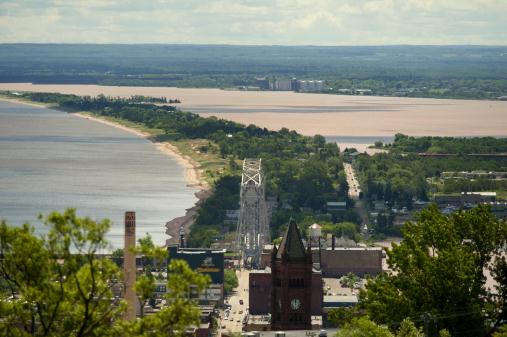



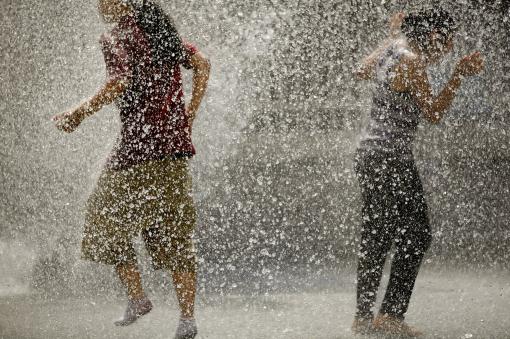

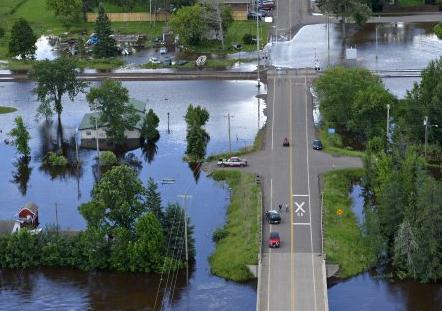

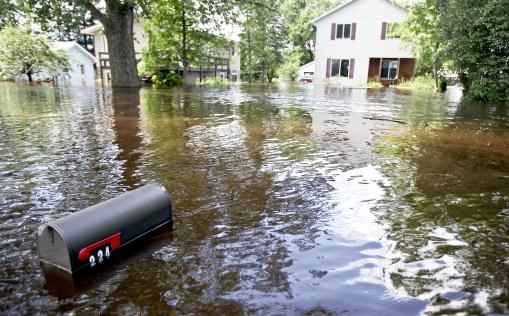
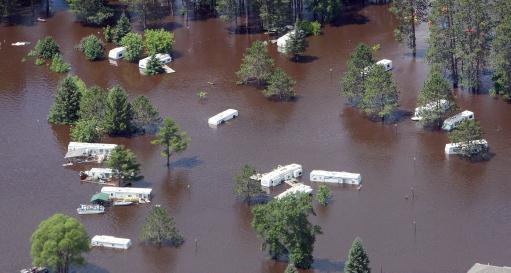
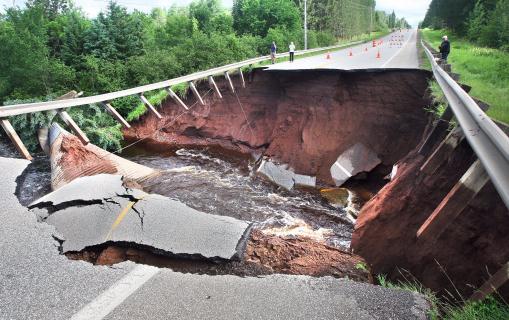
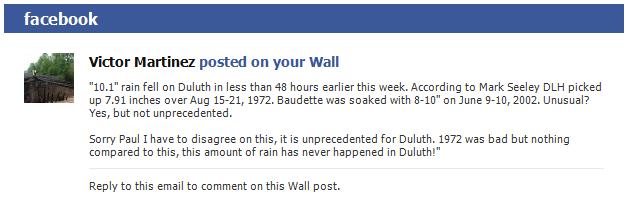
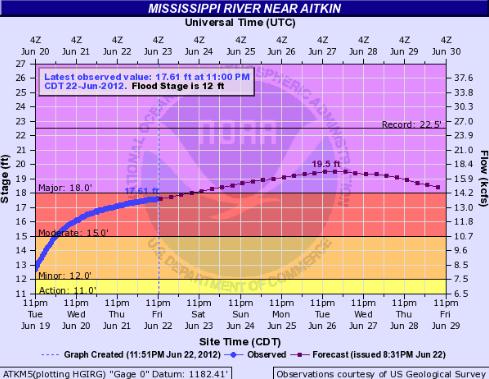
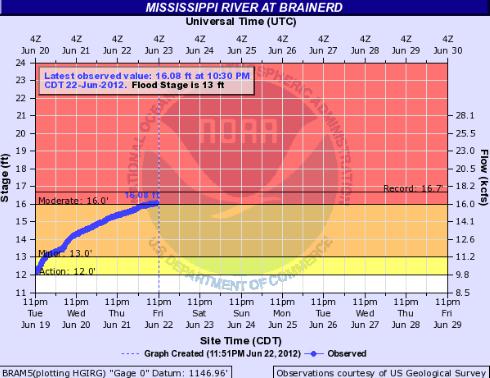
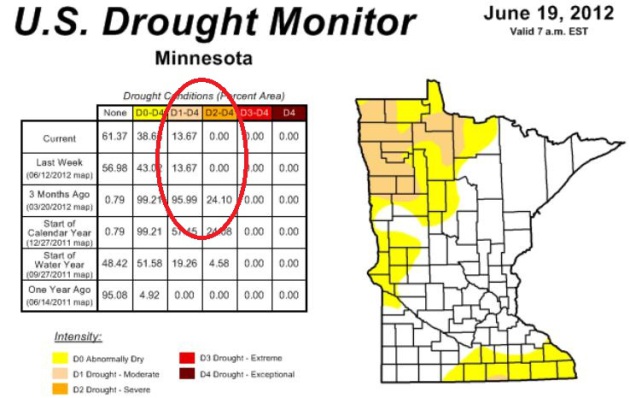



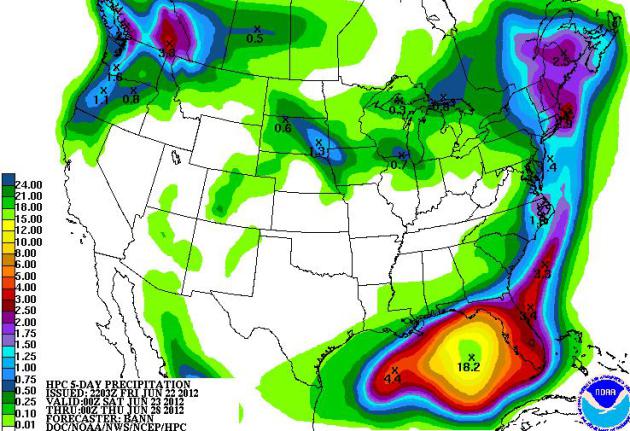










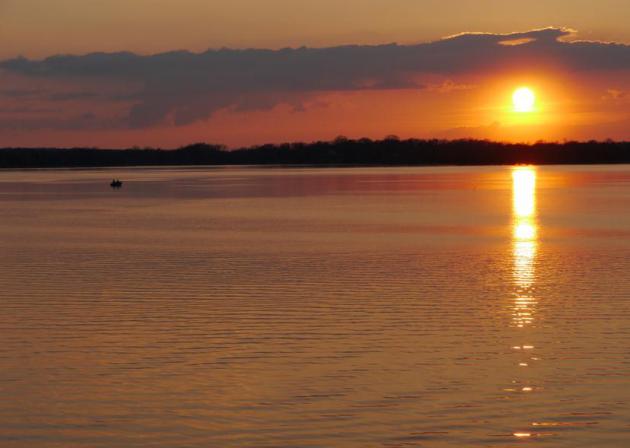
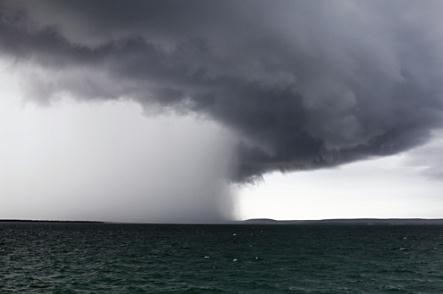
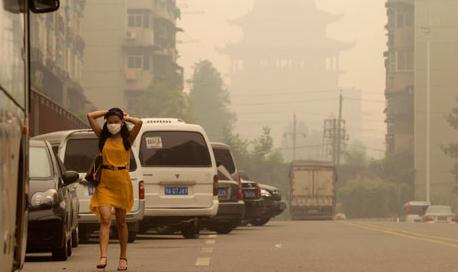





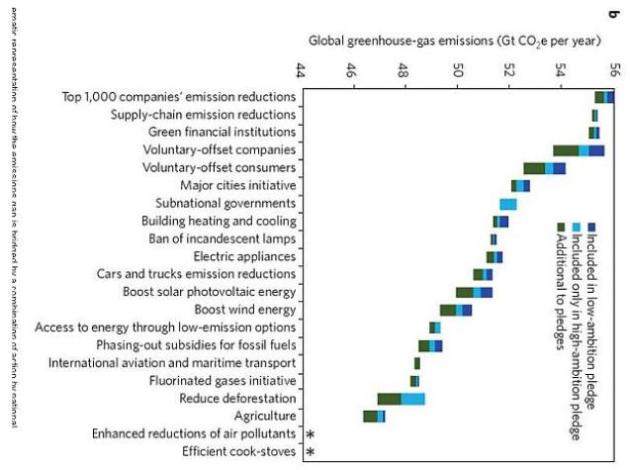


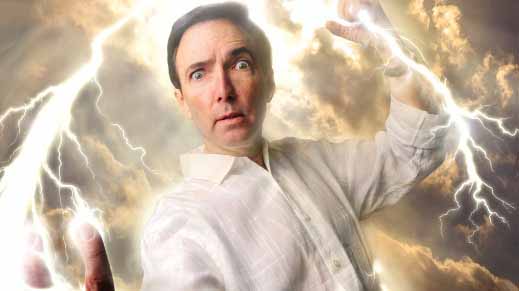
No comments:
Post a Comment